- AMD Unveils Next-Gen Ryzen™ CPUs and GPUs at CES 2025
- AMD Announces Radeon RX 9070 XT and RX 9060 XT Graphics Cards, Powered by RDNA 4
- Shaping the Future of Gaming: AMD’s Ambitious 2025 Roadmap
AMD Unveils Next-Gen Ryzen™ CPUs and GPUs at CES 2025
At CES 2025, AMD took the spotlight by unveiling its latest gaming processors and GPUs, aiming to elevate the gaming experience across desktop, handheld, and mobile platforms. The company revealed new Ryzen™ 9950X3D and 9900X3D desktop processors, the Ryzen™ Z2 Series handheld processors, marking a significant leap in gaming performance.
AMD Ryzen™ 9950X3D and 9900X3D Desktop Processors
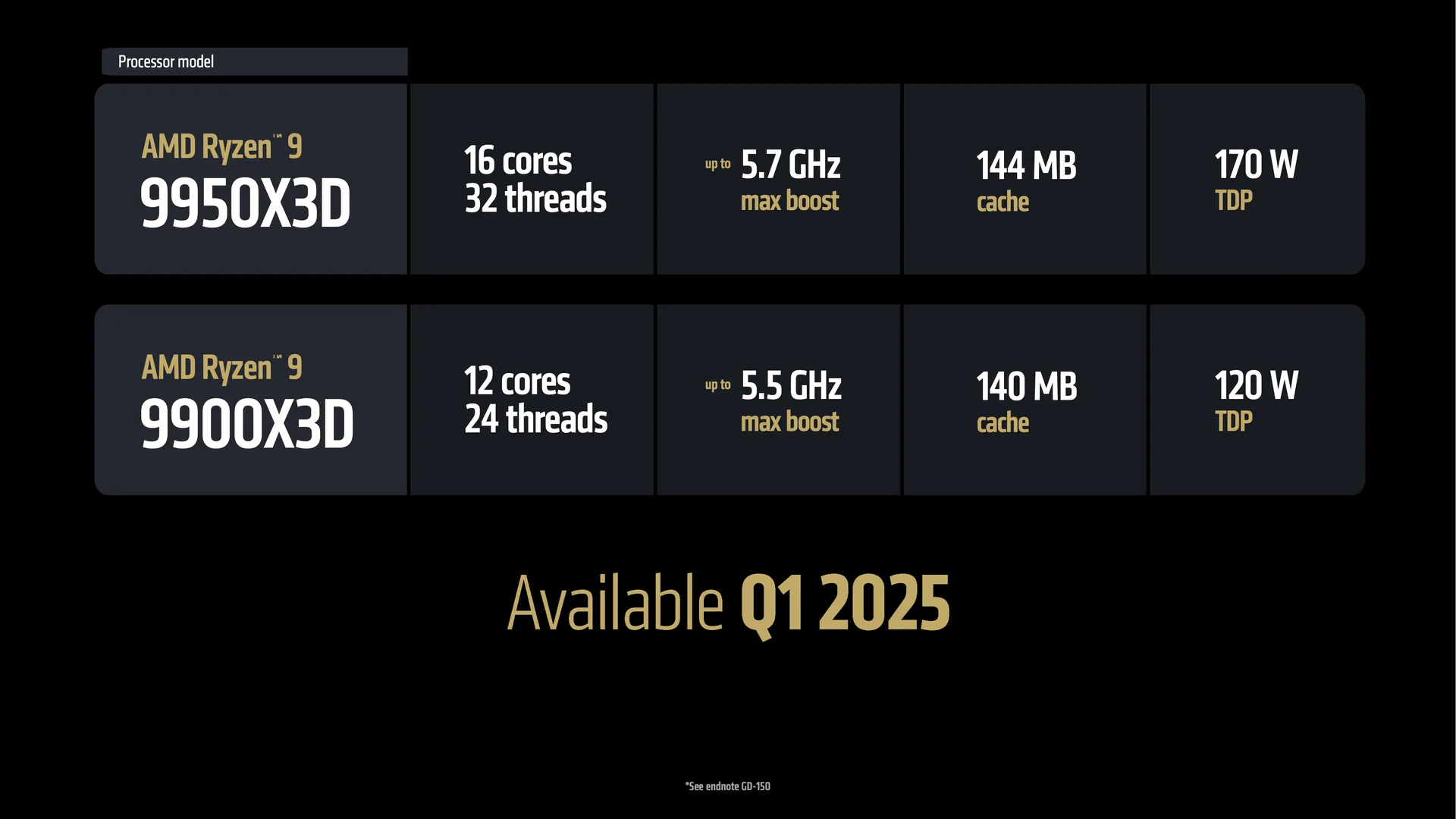
The new Ryzen™ 9950X3D and 9900X3D processors are designed for gamers and content creators, pushing the limits of desktop gaming performance with Zen 5 cores and AMD RDNA™ 2 graphics. These processors feature AMD 3D V-Cache™ technology and are engineered for superior clock speeds, lower temperatures, and greater efficiency. Available in Q1 2025, these processors are equipped with:
| Model | Cores/Threads | Boost / Base Frequency | Total Cache | PCIe | TDP |
|---|---|---|---|---|---|
| AMD Ryzen™ 9950X3D | 16C/32T | Up to 5.7 / 4.3 GHz | 144 MB | Gen 5 | 170W |
| AMD Ryzen™ 9900X3D | 12C/24T | Up to 5.5 / 4.4 GHz | 140 MB | Gen 5 | 120W |
- Ryzen™ 9950X3D (16 cores, 32 threads, up to 5.7 GHz boost)
- Ryzen™ 9900X3D (12 cores, 24 threads, up to 5.5 GHz boost)
Ryzen™ Z2 Series: Handheld Gaming on the Go
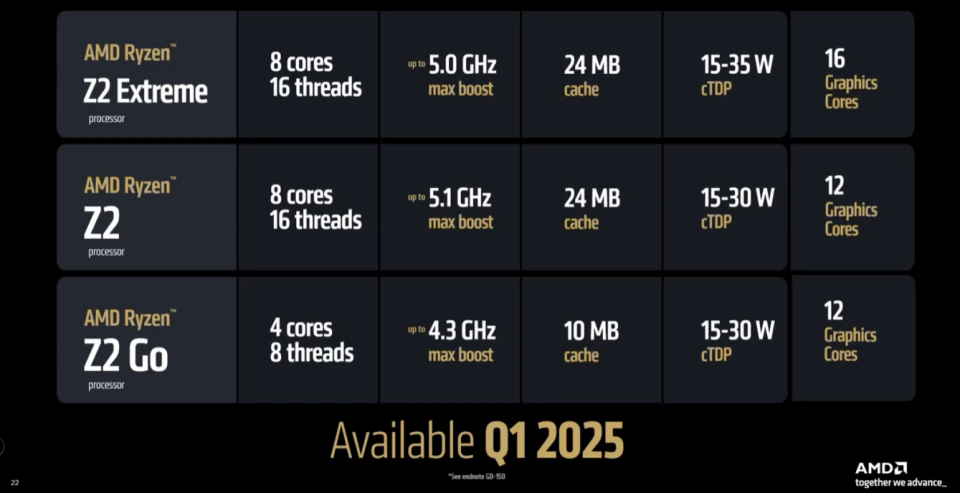
For gamers on the move, AMD introduced the Ryzen™ Z2 Series processors, bringing console-class gaming to handheld devices. With up to 8 Zen 5 cores and RDNA™ 3.5 architecture, the Z2 processors deliver ultra-responsive gaming and power-efficient designs for long-lasting play sessions. Available in Q1 2025, the lineup includes:
- Ryzen™ Z2 Extreme (8 cores, 16 threads, up to 5.0 GHz)
- Ryzen™ Z2 (4 cores, 8 threads, up to 5.1 GHz)
- Ryzen™ Z2 Go (4 cores, 8 threads, up to 4.3 GHz)
AMD Announces Radeon RX 9070 XT and RX 9060 XT Graphics Cards, Powered by RDNA 4
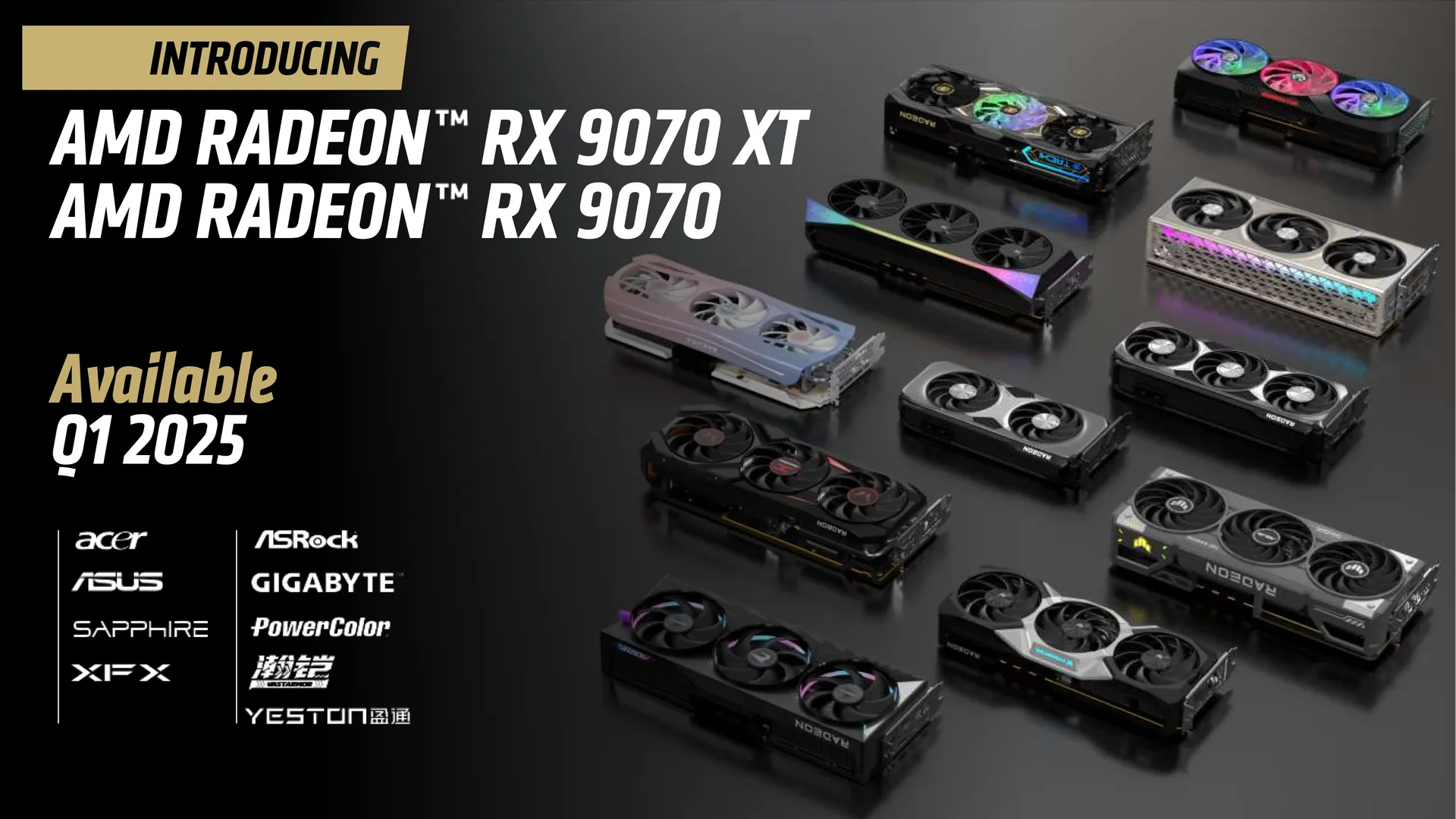
At the 2025 International CES, AMD briefly announced its new Radeon RX 9070 XT and RX 9060 XT graphics cards, marking the next evolution of its gaming graphics line. These new models will be powered by the RDNA 4 architecture, which brings significant performance improvements. AMD plans to launch both cards in Q1 2025.
The new naming scheme for AMD’s graphics cards reflects a shift in strategy, with the company focusing on the performance segment instead of the enthusiast market. As a result, the RX 9070 XT is expected to deliver performance on par with the RX 7900 XT, while the RX 9070 offers slightly better performance than the RX 7800 XT. The RX 9060 XT is projected to outperform the RX 7700 XT, and the RX 9060 will surpass the RX 7600 XT.
Key Features of RDNA 4:
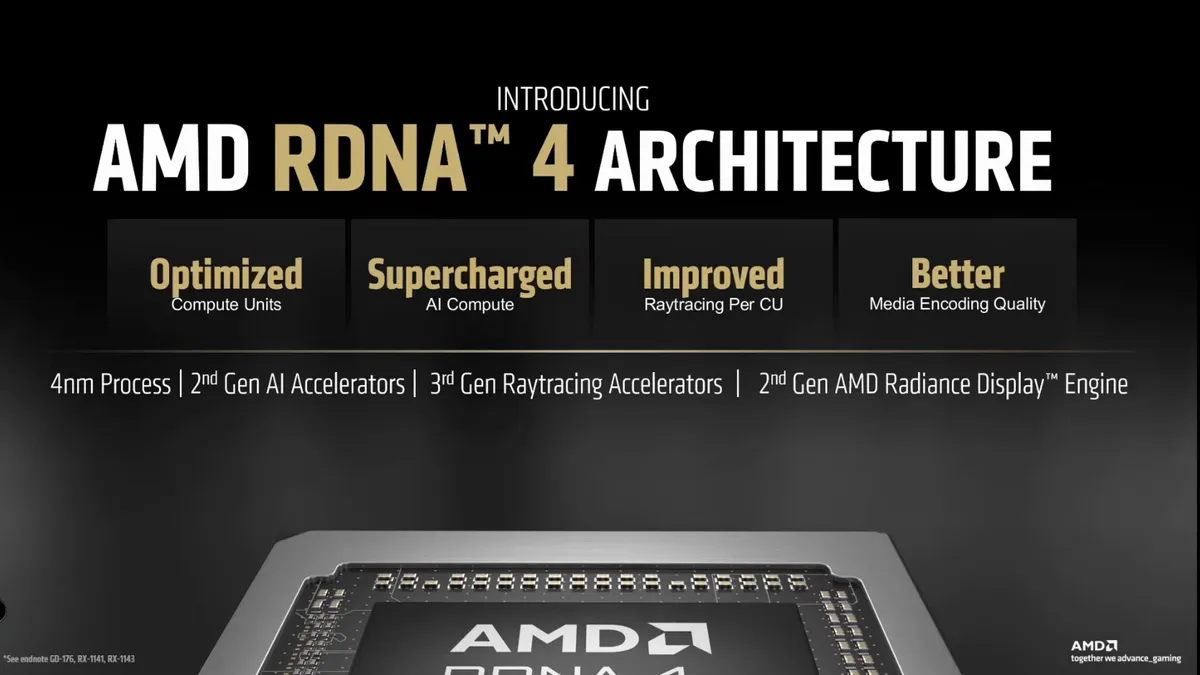
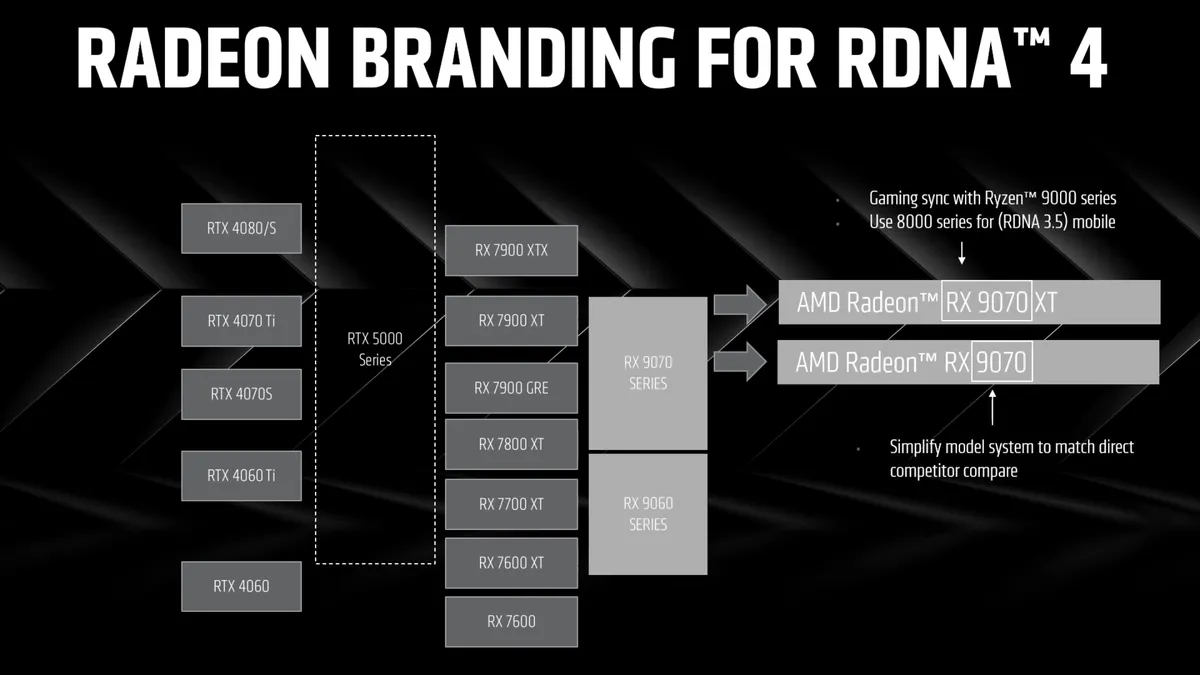
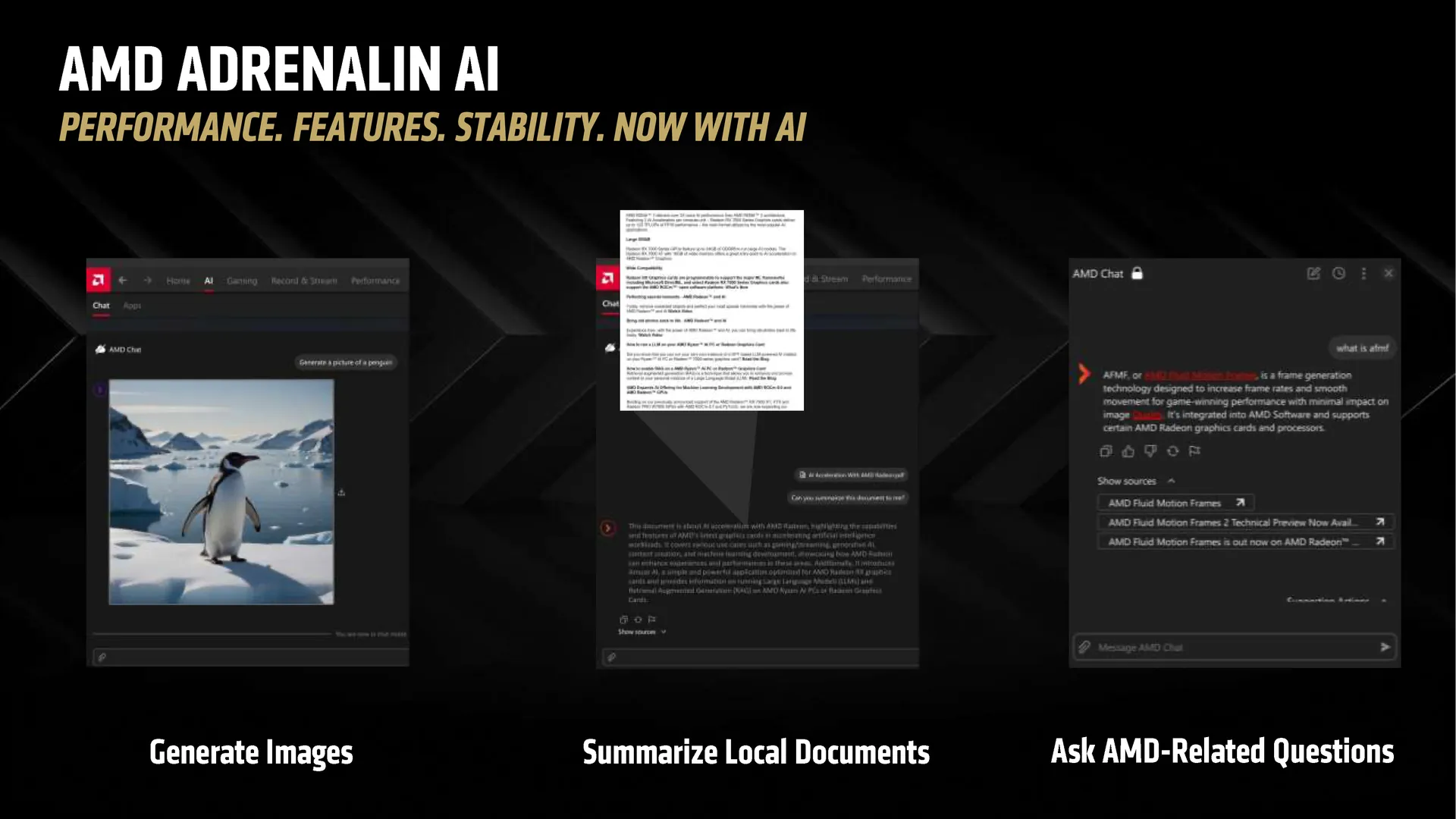
- Increased SIMD Performance: AMD claims RDNA 4 will offer a significant boost in SIMD performance for gaming workloads.
- Generational AI Performance Boost: The 2nd Gen AI accelerators bring enhanced performance. AMD is also introducing its own generative AI tool, “AMD Adrenalin AI,” which can generate images, summarize documents, assist with linguistic tasks, and act as a chatbot for AMD-related queries.
- 3rd Gen Ray Accelerator: This upgrade will help improve ray tracing performance by offloading more tasks to dedicated hardware, freeing up the SIMD engine.
- Media and Display I/O: AMD promises major improvements to media acceleration and display I/O in the new GPUs.
New FidelityFX Super Resolution 4 (FSR 4)
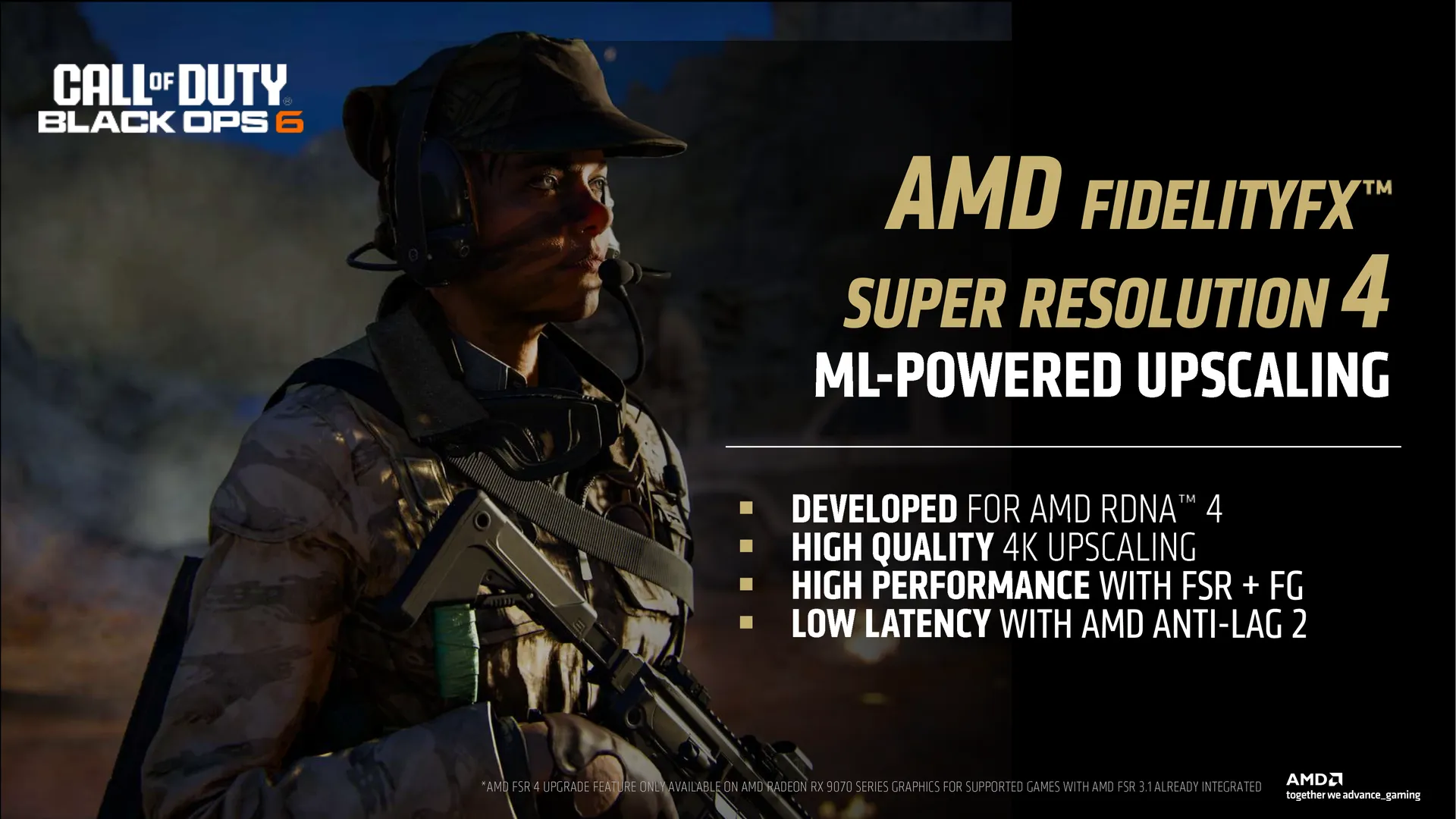
AMD also unveiled FidelityFX Super Resolution 4 (FSR 4) for RDNA 4, featuring a machine learning-based upscaling component. This will work in tandem with Frame Generation and an upgraded Anti-Lag 2, enhancing gaming performance. Call of Duty: Black Ops 6 is confirmed to be one of the first games to utilize FSR 4.
Add-In Board Partners and Launch Details
Nearly all of AMD’s hardware partners, such as Acer, ASRock, ASUS, GIGABYTE, Sapphire, PowerColor, XFX, Vastarmor, and Yeston, are preparing Radeon 9070 series graphics cards. These partners manufacture and sell custom-designed versions of AMD’s reference GPUs, known as Add-In Boards (AIBs). However, MSI has reportedly discontinued its participation in the AMD AIB market.
GPU Architecture: The “Navi 48”
AMD also gave us a glimpse of the “Navi 48” GPU powering the Radeon RX 9070 series. The GPU features a unique rectangular die with a 2:1 aspect ratio, which suggests that it may combine two “Navi 44” dies for improved performance. The “Navi 48” is expected to feature a 256-bit GDDR6 memory interface and 64 compute units (4,096 stream processors), while the “Navi 44” is half that, with a 128-bit memory interface and 32 compute units.
Both the “Navi 48” and “Navi 44” will be built on TSMC’s N4P (4 nm EUV) foundry node, which is used for AMD’s mobile processors and CPU chiplets.
Shaping the Future of Gaming: AMD’s Ambitious 2025 Roadmap
AMD’s announcements at CES 2025 showcase the company’s continued push to lead the gaming and computing industries with cutting-edge technology. From the powerful Ryzen™ 9950X3D and 9900X3D processors for desktop gamers and creators, to the versatile Ryzen Z2 handheld gaming processors, AMD is providing a variety of high-performance options for every type of gamer. The unveiling of the Radeon RX 9070 series powered by the revolutionary RDNA 4 architecture promises to elevate graphics performance across the board, with features like AI-enhanced upscaling, improved ray tracing, and better media acceleration.
As we look ahead, the competition in both CPU and GPU markets will intensify with AMD’s strong offerings, pushing the boundaries of what’s possible in gaming and content creation. Keep an eye out for these groundbreaking products set to launch throughout 2025, as AMD continues to reshape the landscape for gamers worldwide.


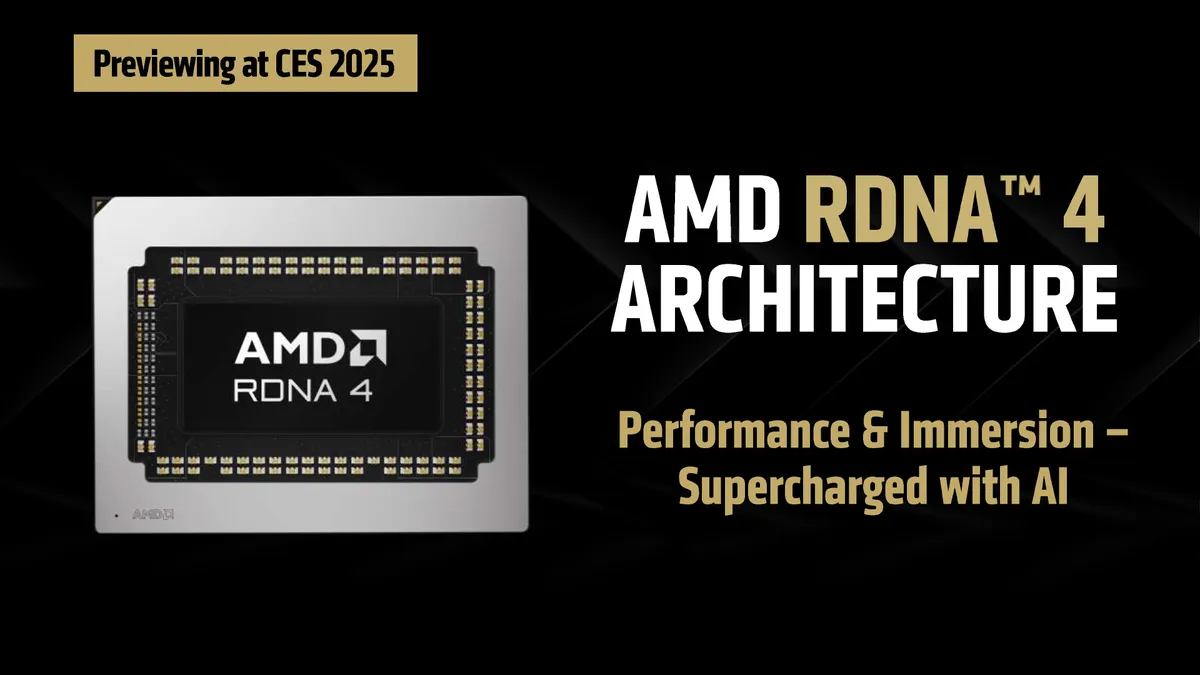
Leave a Reply